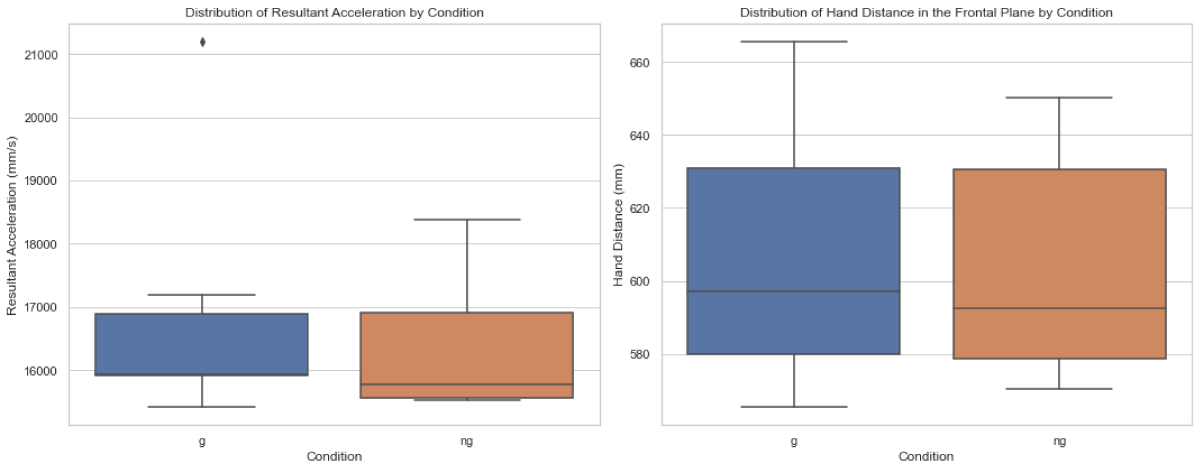Abstract
This study examined upper limb kinematics under simulated visually impaired conditions. By investigating how upper limb movements adapt in these circumstances, we aimed to gain insights that may prove valuable for both healthy populations and those with clinical conditions. Data, including 3D marker-based motion capture and accelerometer readings, were collected from seven healthy volunteers walking on a treadmill at 1.5 m/s under two conditions: without glasses (NG) and with stroboscopic glasses (G). Each walking condition lasted 2 minutes, and two 10-second recordings were analyzed from the midpoint of each session. Contrary to our hypothesis, simulated visual impairment with stroboscopic eyewear at 6Hz did not statistically affect upper limb kinematics, specifically in terms of wrist acceleration and hand distance in the frontal plane. Future research should explore varied visual impairment conditions, extend task durations, and investigate the relationship between subjective gait difficulties and biomechanical data.









